
The railway bridge on the Westerdokseiland in Amsterdam is one of the last surviving pivot bridges in the Netherlands. Bridge No 19 S was constructed in 1922 as a modernized railway connection between the Westelijk Stationseiland and the Westerdokseiland, which was at that time being transformed into a large shunting-yard for the railways.

© Rob Hoekstra
The bridge, which had long fallen into disuse, was still a striking object, historically as well as architecturally. The City of Amsterdam was therefore keen to preserve this showpiece on the river IJ and decided to give the monumental bridge a public function. Because of the location and the panoramic views it was decided to use it as a café-restaurant.

© Rob Hoekstra
The City Council organized a design competition in 2005 and the entry by de Architekten Cie. was chosen from the 14 submissions. OPEN café-restaurant is a pure, transparent, glass volume that fits precisely onto the existing bridge. It is composed of a floor, a roof and a glazed façade that is formed entirely of pivotal windows, all of which can be opened.

© Rob Hoekstra
The pure volume is 'honest' and 'direct' in its detailing. The pivotal windows add a subtle refinement to the principle of the puristic, modernistic box and introduce the quality of elegant, undulating movement. These window frames were specially designed in collaboration with the company Eurodeur.
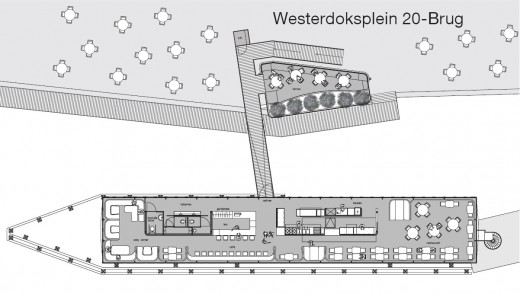
by CIE
Inside two detached green volumes contain the kitchen, cloakroom, toilets and bar. A pleated wooden ribbon meanders along the inside of the glazed façade,
constituting in succession benches, a bar with seating, and railing. This layout makes it possible to appreciate the whole of the interior and lends the space its spacious and airy character.
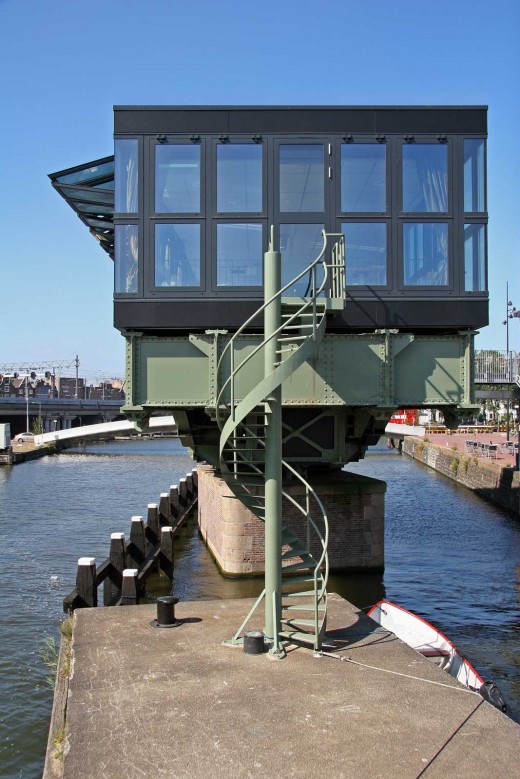
© Rob Hoekstra
A staircase and a lift attached to the disused brick pillar on the quayside, provide access to an outdoor serving area on top of it, from which visitors can reach OPEN via a footbridge across the water.
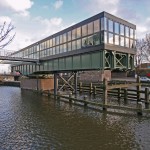
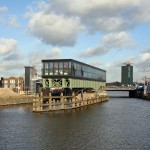
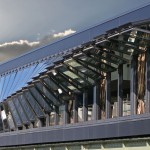

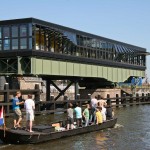



- ۹۰/۰۴/۱۸





















